
Americans have gradually lowered formal academics all the way down to the preschool years. However, child development stages have not changed. Maria Montessori studied children and how they learned through play. When Americans hear the word Montessori, they often think about alternative preschool education in a center. However, once you know the principles of a Montessori education, you will see that they can be applied both in a homeschool environment and throughout the elementary years. Here are the 8 best principles of a Montessori homeschool based on the educational philosophy of Maria Montessori:
NOTE: This blog article contains affiliate links.
Prepared Environment for your Montessori Homeschool
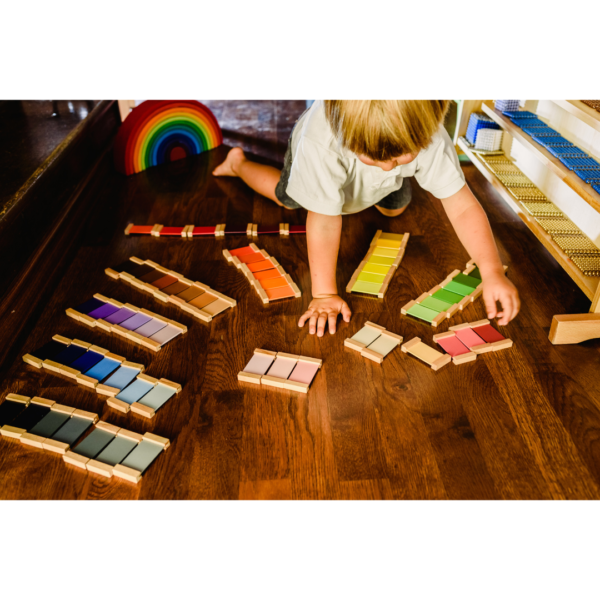
Create a learning space that is organized, accessible, and conducive to independent exploration. Offer materials and activities that promote hands-on learning and encourage children to follow their own interests. This is the subtle way that the teacher directs the content that will be learned.
Montessori environments are typically uncluttered and full of natural materials. Raffi baskets, wood trays filled with objects from nature help the child to learn words and numbers and experience concepts. Natural colored placemats and low child-sized tables help children to organize their tasks and play freely.
A clutter-free and organized environment helps children to learn to take care of materials, by playing with one activity at a time, and then putting things away.
Child-Led Learning
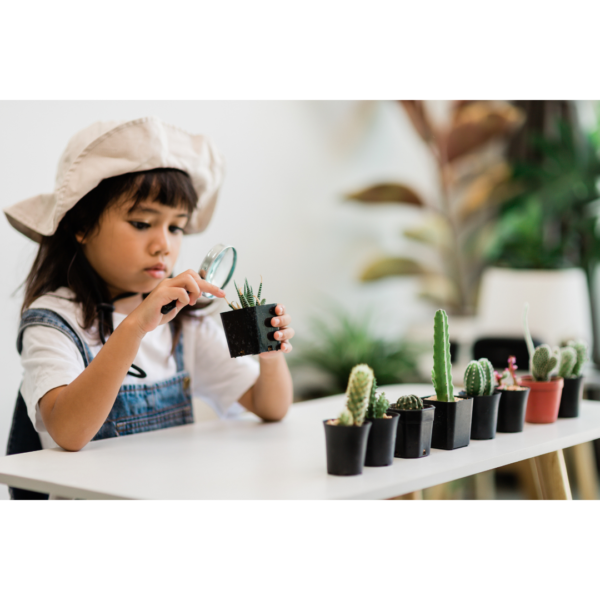
Allow children to take the lead in their learning journey. Encourage their natural curiosity and interests, and provide them with opportunities for self-directed exploration. Follow the child’s pace and give them autonomy to choose activities that engage them.
Very young children have a natural curiosity, so early childhood is the best time to nurture child-led learning. If your child has been in an American style public school setting, you probably want to de-school before initiating a Montessori approach.
Montessori activities are introduced through a 3-step lesson of “I’ll show you,” “Let’s do it together,” “You do it on your own.” Once an activity has been taught, allow the child to play with whatever activity they want to practice.
Continue to provide an activity as long as your child shows interest. You may want to introduce a new task each week to be explored. That would be the time to eliminate a task that is no longer enticing.
Hands-On Materials
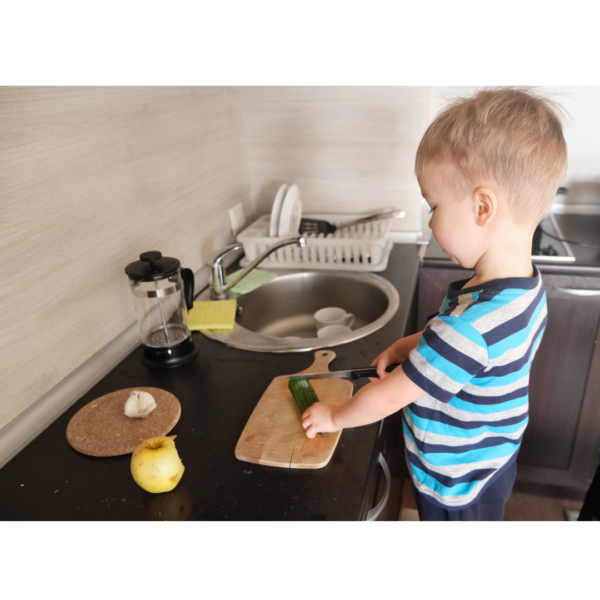
Montessori materials that are designed to be self-correcting and engage the senses. These materials help children develop and refine their skills in various areas such as math, language, practical life, and sensorial exploration.
Montessori materials often use natural materials. Incorporate rocks, sticks, leaves, acorns, and flowers into activities for language and math. Look for different textures, shapes, sounds, and colors.
Many Montessori materials mimic adult tools. One of the first activities may be setting the table or pouring. Yes, you can purchase “official” Montessori apparatus and tools, but it is easier just to use what you already have around the house. You will likely want a small set of cleaning tools, like a broom and dust pan. As kids grow and move into the elementary years, just use regular things around the house.
What is you like color and ease of cleaning plastic? That’s OK. You don’t have to make your Montessori homeschool look like a Montessori school. Use whatever toys and objects you want. You can still follow Montessori principles in what and how you do learning.
For example, instead of expensive graduated stacking shapes made of wood, you can use plastic stacking rings or have your child arrange the plastic storage containers in your cabinet by size. Provide a stack of washers or screws from the garage to have your child see which ones fit together or line them up according to size. For older students, provide a ruler and have them measure the provided materials.
Individualized Instruction

Recognize and respect each child’s unique developmental needs and learning preferences. Offer personalized instruction and support, tailoring activities and lessons to match their abilities and interests. You may still use textbooks as your spine. You may still print out an occasional workbook. However, a notebook for children to write down their observations or discoveries are important. For math, you can provide laminated task cards and have the child work on them individually. That way, the children can do the same task card again and again until they are confident. Of course, rotate new task cards and skills in as new concepts are presented.
Respect for the Child
Treat children with respect and dignity. Listen to their thoughts, ideas, and concerns. Empower them to make decisions and take responsibility for their learning. Foster a nurturing and supportive environment that promotes positive self-esteem and independence. A relationship with the teacher and praise for their work and discoveries are more important than tangible rewards.
In a Montessori homeschool, all family members respect each other. Children are free to ask questions without responses of sarcasm or rebuke. Parents provide a structured environment where children are free to move and explore while learning. Kind words and encouragement to work through a problem independently help children become patient and diligent at problem-solving.
Mixed-Age Grouping
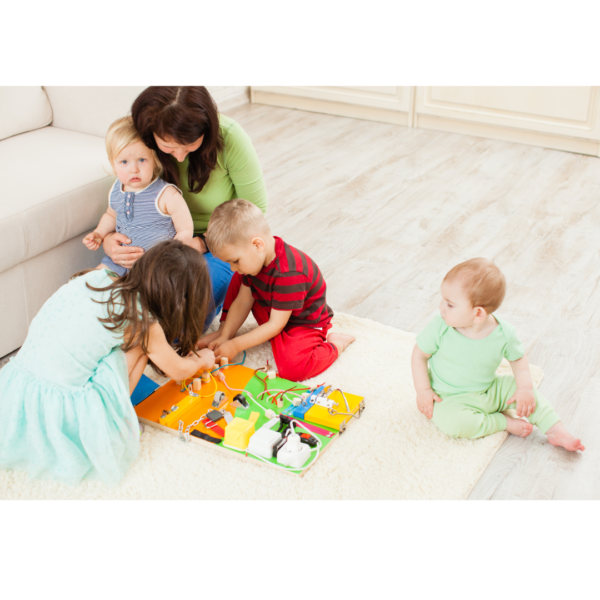
Encourage learning in mixed-age groups. Older children can mentor younger ones, fostering collaboration, empathy, and social development. Mixed-age groups also provide opportunities for children to learn from each other and progress at their own pace.
In a homeschool environment, you can put out several tasks for everyone to enjoy. The younger children are free to try the tasks for the older children without being told they are not ready for that lesson. Older children are free to do the tasks for younger children so they can review and practice skills already learned. This encourages mastery and on-going maintenance of skills.
Freedom within Limits in your Montessori Homeschool
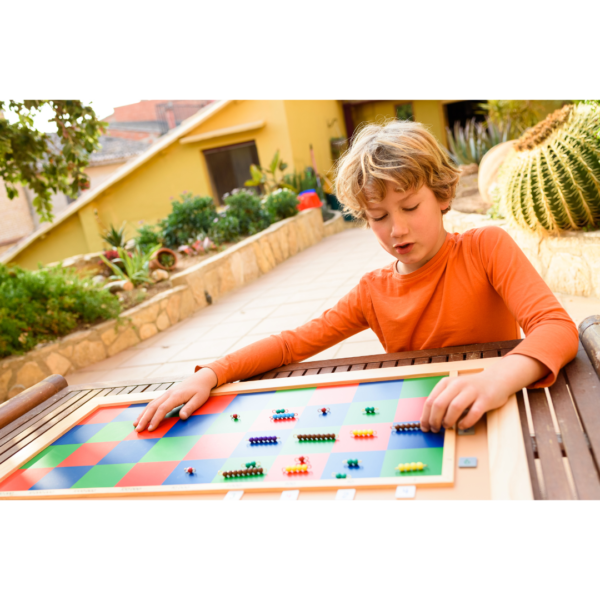
Set clear boundaries and guidelines for behavior and learning expectations. Give children the freedom to choose their activities, but ensure they understand the responsibilities that come with it. Help them develop self-discipline and respect for others.
Some of the freedoms of Montessori homeschool Learning are:
- 1. Freedom of Choice
- 2. Freedom of Movement
- 3. Freedom of Social Interaction
- 4. Freedom to Make Mistakes and Practice
- 5. Freedom of Time to Work Uninterrupted
ll of these freedoms are best accomplished in a homeschool environment. With a flexible routine rather than a rigid time schedule, children can feel free to play and learn in a natural way that allows them to advance at their own pace.
Uninterrupted blocks of time for children to engage in focused and concentrated work helps kids become absorbed in what they are learning. Avoid unnecessary interruptions and distractions during these periods to allow them to fully immerse themselves in their activities. Kids can talk while they play and ask questions when needed. They can sit on the floor or on a couch or even stand if they want to do a task.
How Do I Set Up a Montessori Homeschool?
Mostly that answer is for another blog article. However, there are resources for you to use to get ideas. It takes time to prepare the environment and the tasks. For the most part, that preparation is a lot more fun than finding and printing worksheets. And the tasks can be used over and over.
Probably the hardest part is establishing your routine. If Montessori principles are new to you, you may want to start by doing reading, writing, and math in a more traditional way in the morning and set up Montessori play tasks for the afternoon. That way your children can still engage in continued learning and free you up to do Mom work.
Here are some of those resources that might help you explore if incorporating any of the Montessori principles in your homeschool might be right for your family. AND, Don’t forget to grab your freebies from our FREEBIES page!
Montessori at Home: A Practical Guide for Parents
By Tara Greaney / Rockridge Press
How To Raise An Amazing Child the Montessori Way, 2nd Edition
By Tim Seldin / DK
Teaching Montessori In the Home – eBook
By Elizabeth Hainstock / Random House
Montessori: Living the Good Life
By Connie Ripley Lujan / WestBow Press
Spiritual Guidance of Children: Montessori, Godly Play, and the Future
By Jerome W. Berryman / Morehouse Publishing

